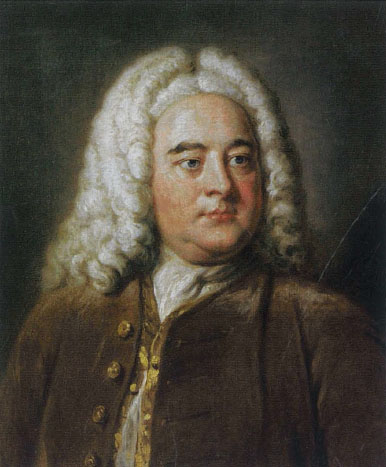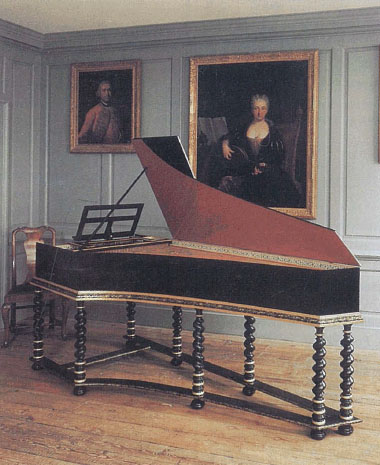
[caption id="TheHandelHouseMuseum_img1" align="aligncenter" width="386"]

PRIVATE COLLECTION/BRIDGEMAN ART LIBRARY
MUSICAL PLAYWRIGHT Charles Jennens wrote to a friend on 10th July 1741 that he had completed the libretto, or text, for a new piece and had sent it to renowned composer George Frederick HandeL “I hope he will lay out his whole Genius & Skill upon it,” wrote Jennens, “that the Composition may excel all his former Compositions, as the Subject excels every other Subject. The Subject is Messiah.”
Handel received the libretto and began composing the now-famous oratorio on 22nd August; he finished it 24 days later. Today, it wouldn’t be Christmas without the majestic strains of Handel’s Messiah marking the holiday, but it was first performed during the Easter season, on 13th April 1742, in Dublin as a charity benefit. (The tradition of performing Handel’s Messiah at yuletide began in 1791 when the Caecilian Society of London performed it for the first time at Christmas.) A full house was expected, so the Dublin Journal asked ladies “not to come with Hoops” in their dresses, and “Gentlemen are desired to come without their Swords,” to allow more people in the hall. Dublin wasn’t disappointed, and high praise followed the oratorio’s debut, including the apocryphal story that after hearing the alto solo “He was Despised,” a certain clergyman shouted to the singer, “Woman, for this thy sins be forgiven thee!”
For Jennens’part, he was displeased over Handel’s decision to debut the oratorio in Ireland; nor did he approve of the manner in which it was composed. “[Handel’s] Messiah has disappointed me, being set in great hast [sic], tho’ he said he would be a year about it, & make it the best of all his Compositions. I shall put no more Sacred Works into his hands, to be thus abuse’d …”
London audiences were not so easy to please either. An outcry arose to please either. An outcry arose text by costumed professionals in a playhouse as secular entertainment. The oratorio opened there during the Lenten season of 1743, but it was so poorly received that it closed after only a handful of performances. Nearly a decade passed before Londoners finally embraced what would be Handel’s most famous composition.
The chilly reception from his adopted hometown disappointed Handel. Though born in Saxony in 1685, the composer had become a naturalized British subject in 1726, and since 1723 he had resided at 25 Brook Street, which served as his home until his death in 1759. It was here that he composed Messiah and some of the finest music of the baroque period.
MUSEUM NOTES
Handel House Museum, 25 Brook Street, Mayfair, London WIK 4HB
Telephone: 02074 951685
Web: www.handelhouse.org
Email: [email protected]
Admission: £4.50 for adults, £3.50 for seniors and students, £2 for children
Hours: open year round (check for holiday closings) Tues, Wed, Fri, sat 10 am-6 pm; Thurs I 0 am-8 pm; and Sun 12-6 pm. Closed Mondays, including bank holidays.
The Handel House Trust opened the Handel House Museum in November 2001. The Trust has transformed the brown on the doors, which tended to house back to the early Georgian style get grubby. Using an inventory of the I of the composer’s own day and furnished it as he would have done. Accordingly, artworks adorn the walls, including a portrait of Charles Jennens from the Trust collection, as well as other fine art on loan from major national collections, such as a portrait of Handel after Thomas Hudson. Hundreds of Handel artefacts are on display, including letters, early editions of operas and oratorios, and sculpture. In addition, a selection of manuscripts and printed scores can be viewed at adjoining 23 Brook Street, which the Trust also manages and where guitarist Jimi Hendrix briefly lived in the late 1960s.
[caption id="TheHandelHouseMuseum_img2" align="aligncenter" width="380"]

COURTESY OF THE HANDEL HOUSE MUSEUM
At 25 Brook Street the Trust has restored the interior’s original paint scheme that analysis shows to have been lead grey with a dark chocolate contents taken after the composer’s death, the Trust has acquired furnishings to correlate with it, including a full canopied bed dressed in crimson harateen. They also commissioned a double manual harpsichord that matches the specifications of Handel’s instrument.
WITH SUCH AN EFFORT to recall the sense, sight, and feel of Handel’s home, it would take little to stir the imagination here on a chill December day. When Christmas lights twinkle through frosted windowpanes, perhaps faint echoes of past musical glory can still be heard—“For unto us a child is born, a son is given …”





Comments